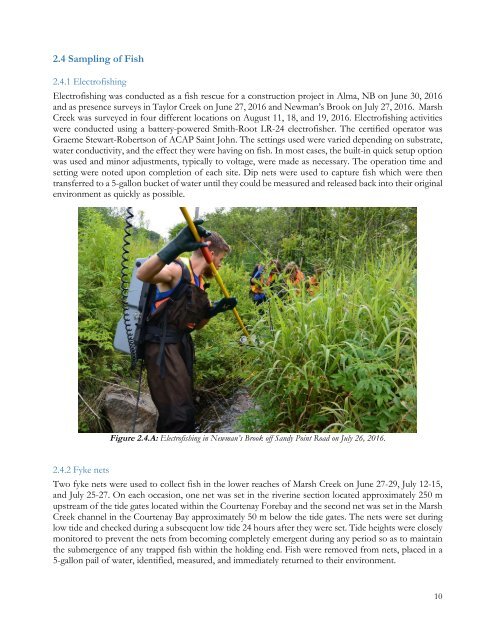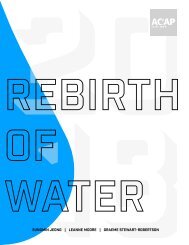Rebirth of Water Report 2016-2017
Marsh Creek, which is the largest watershed in greater Saint John, has been the recipient of centuries of untreated municipal wastewater deposition. Offensive odours, unsightly sanitary products and the threat posed by various human pathogens, resulting largely from the ~50 sewage outfalls in the lower reaches of Marsh Creek and the Saint John Harbour, have caused most residents to abandon the wellness of the watercourse. ACAP Saint John, a community-based ENGO and champion of the Harbour Cleanup project, has been conducting water quality monitoring and fish community surveys in the watershed since 1993 with the view towards someday restoring the ecological integrity of this forgotten natural asset.
Marsh Creek, which is the largest watershed in greater Saint John, has been the recipient of centuries of untreated municipal wastewater deposition. Offensive odours, unsightly sanitary products and the threat posed by various human pathogens, resulting largely from the ~50 sewage outfalls in the lower reaches of Marsh Creek and the Saint John Harbour, have caused most residents to abandon the wellness of the watercourse. ACAP Saint John, a community-based ENGO and champion of the Harbour Cleanup project, has been conducting water quality monitoring and fish community surveys in the watershed since 1993 with the view towards someday restoring the ecological integrity of this forgotten natural asset.
Create successful ePaper yourself
Turn your PDF publications into a flip-book with our unique Google optimized e-Paper software.
2.4 Sampling <strong>of</strong> Fish<br />
2.4.1 Electr<strong>of</strong>ishing<br />
Electr<strong>of</strong>ishing was conducted as a fish rescue for a construction project in Alma, NB on June 30, <strong>2016</strong><br />
and as presence surveys in Taylor Creek on June 27, <strong>2016</strong> and Newman’s Brook on July 27, <strong>2016</strong>. Marsh<br />
Creek was surveyed in four different locations on August 11, 18, and 19, <strong>2016</strong>. Electr<strong>of</strong>ishing activities<br />
were conducted using a battery-powered Smith-Root LR-24 electr<strong>of</strong>isher. The certified operator was<br />
Graeme Stewart-Robertson <strong>of</strong> ACAP Saint John. The settings used were varied depending on substrate,<br />
water conductivity, and the effect they were having on fish. In most cases, the built-in quick setup option<br />
was used and minor adjustments, typically to voltage, were made as necessary. The operation time and<br />
setting were noted upon completion <strong>of</strong> each site. Dip nets were used to capture fish which were then<br />
transferred to a 5-gallon bucket <strong>of</strong> water until they could be measured and released back into their original<br />
environment as quickly as possible.<br />
Figure 2.4.A: Electr<strong>of</strong>ishing in Newman’s Brook <strong>of</strong>f Sandy Point Road on July 26, <strong>2016</strong>.<br />
2.4.2 Fyke nets<br />
Two fyke nets were used to collect fish in the lower reaches <strong>of</strong> Marsh Creek on June 27-29, July 12-15,<br />
and July 25-27. On each occasion, one net was set in the riverine section located approximately 250 m<br />
upstream <strong>of</strong> the tide gates located within the Courtenay Forebay and the second net was set in the Marsh<br />
Creek channel in the Courtenay Bay approximately 50 m below the tide gates. The nets were set during<br />
low tide and checked during a subsequent low tide 24 hours after they were set. Tide heights were closely<br />
monitored to prevent the nets from becoming completely emergent during any period so as to maintain<br />
the submergence <strong>of</strong> any trapped fish within the holding end. Fish were removed from nets, placed in a<br />
5-gallon pail <strong>of</strong> water, identified, measured, and immediately returned to their environment.<br />
10


















